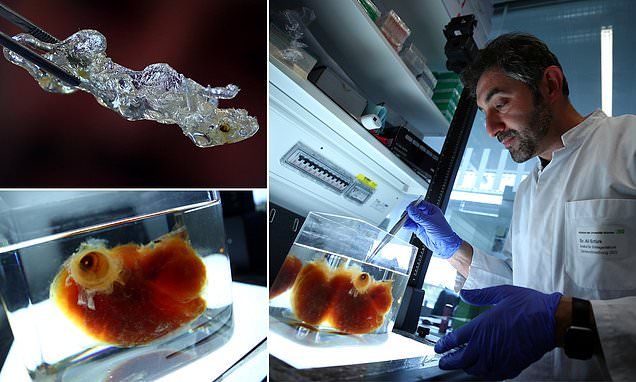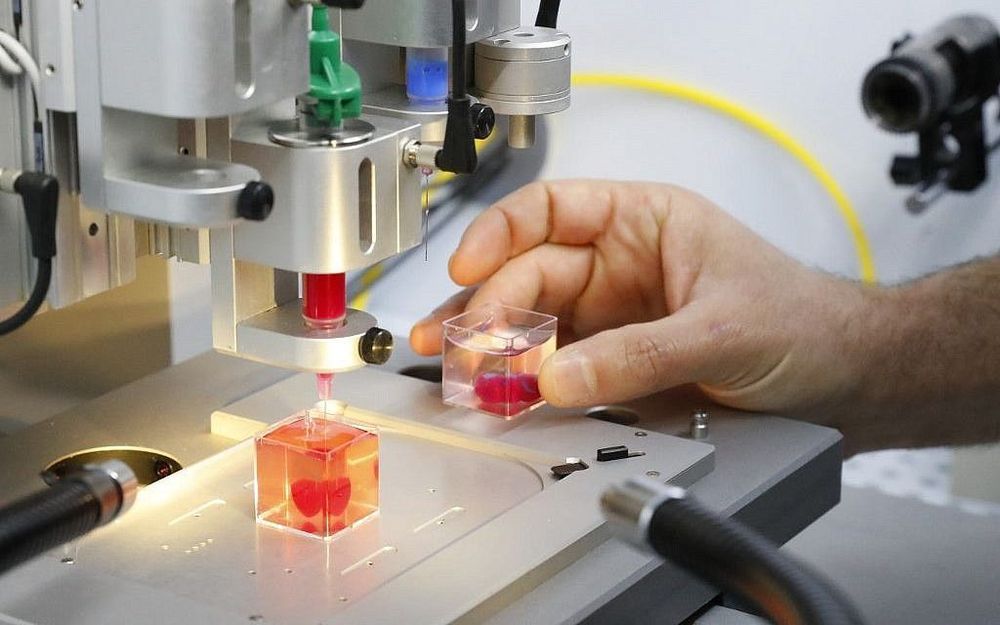Archive for the ‘3D printing’ category: Page 63
Apr 27, 2019
Scientist: “Alien Life Now Seems Inevitable and Possibly Imminent”
Posted by Shailesh Prasad in categories: 3D printing, alien life, bioprinting
The cosmos are filled with roughly Earth-sized exoplanets. Various moons, comets, and planets have stores of water, organic molecules, and amino acids like those that make up life on Earth.
Cathal O’Donnell, a 3D bioprinting researcher at St. Vincent’s Hospital in Melbournethose odds — he argues in The Conversation that the abundance of potentially habitable worlds out there makes the discovery of extraterrestrial life “inevitable and possibly imminent.”
Apr 26, 2019
This 3D-printed beehive could be our future home on Mars
Posted by Klaus Baldauf in categories: 3D printing, habitats, space
Would you like to spend a night in a future 3D-printed Mars habitat? You might get the chance.
Apr 25, 2019
Researchers use 3D printer to print glass
Posted by Shailesh Prasad in categories: 3D printing, biotech/medical
For the first time, researchers have successfully 3D printed chalcogenide glass, a unique material used to make optical components that operate at mid-infrared wavelengths. The ability to 3D print this glass could make it possible to manufacture complex glass components and optical fibers for new types of low-cost sensors, telecommunications components and biomedical devices.
In The Optical Society (OSA) journal Optical Materials Express, researchers from the Centre d’Optique, Photonique et Laser (COPL) at Université Laval in Canada, Patrick Larochelle and his colleagues, describe how they modified a commercially available 3D printer for glass extrusion. The new method is based on the commonly used technique of fused deposition modeling, in which a plastic filament is melted and then extruded layer-by-layer to create detailed 3D objects.
“3D printing of optical materials will pave the way for a new era of designing and combining materials to produce the photonic components and fibers of the future,” said Yannick Ledemi, a member of the research team. “This new method could potentially result in a breakthrough for efficient manufacturing of infrared optical components at a low cost.”
Continue reading “Researchers use 3D printer to print glass” »
Apr 25, 2019
German scientists create see-through human ORGANS in step toward 3D-printed body parts
Posted by Carse Peel in categories: 3D printing, biotech/medical, neuroscience

German scientists create see-through ORGANS in a step toward 3D-printed parts that could be transplanted in the human body…
Researchers in Germany have created transparent human organs using a new technology that could pave the way to print three-dimensional body parts such as kidneys for transplants.
Apr 23, 2019
2D stacking method could make 3D-printed organs viable
Posted by Quinn Sena in categories: 3D printing, bioprinting, biotech/medical, robotics/AI

In an effort to scale up the manufacture of biomaterials, researchers at UC Berkeley have combined bioprinting, a robotic arm, and flash freezing in a method that may one day allow living tissue, and even whole organs, to be printed on demand. By printing cells into 2D sheets and then freezing them as assembled, the new technique improves cell survival during both building and storage.
Apr 18, 2019
Dr. Doris Taylor — Texas Heart Institute — IdeaXme — Ira Pastor — “How to Build a New Heart”
Posted by Ira S. Pastor in categories: 3D printing, aging, bioengineering, biotech/medical, chemistry, cryonics, DNA, genetics, health, life extension

Apr 18, 2019
Metamaterials Embedded with Geometrical Optics Could Simplify Optical Devices
Posted by James Christian Smith in categories: 3D printing, materials
The researchers believe that other MEGOs that absorb, enhance, reflect, or bend waves in new ways could be created using patterned 3D printing. The current Tufts study utilizes stereolithography. Other 3D-printing technologies, such as two-photon polymerization, could provide printing resolution down to 200 nm, which would enable the fabrication of even finer metamaterials that could detect and manipulate electromagnetic signals of even smaller wavelengths, potentially including visible light. As resolution in 3D printing improves, MEGO devices could reach terahertz frequencies.
MEDFORD, Mass., April 9, 2019 — 3D-printed metamaterials developed by a Tufts University engineering team display properties not found in conventional materials. The fabrication methods used by the team demonstrate how stereolithography-based 3D printers can be used to create 3D optical devices through a process that fuses metamaterials with geometrical optics, or MEGO. The MEGO devices can be fabricated at a lower cost than devices made using typical fabrication methods.















